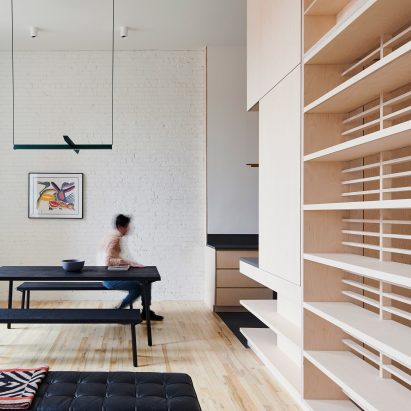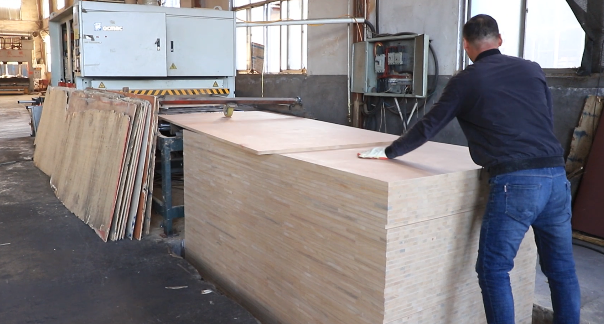Plywood is a material commonly used in construction and furniture making, consisting of layers of thin wood planks held together with glue. Due to its strong, durable and easy-to-work properties, plywood is widely used in various construction projects and interior decoration. This article will introduce the steps and precautions for plywood installation to help you complete the installation process smoothly.

Preparation Work:
Measure and plan: Before installing plywood, first measure the size of the installation area and make a detailed installation plan. Make sure the plywood covers the required area completely, taking into account load-bearing and structural requirements.
Materials to buy: Choose the right plywood for your project, with different thicknesses and sizes of boards available depending on your needs. In addition, you need to purchase auxiliary materials such as screws, screwdrivers, and glue.
Clean up the installation area: Before installation, make sure the installation area is clean, level and free of obstructions. Remove dust and debris from the floor, and check the floor for evenness.

Installation Steps:
Sizing: Based on the measurements and installation plan, use a saw or chainsaw to trim the plywood to the desired size. Make sure the edges of the cut are neat and straight.
Pre-positioning: On the four corners of the installation area, use a carpenter’s pencil or other tool to mark the location of the plywood for proper positioning during installation.
Positioning the plywood: Place the plywood in its pre-positioned position, making sure the edge remains flush with the wall or other object. Use a spirit level or carpenter’s level to verify that the plywood is level.
Secure the plywood: Use screws and a screwdriver to secure the plywood to the floor or wall. Usually, screws need to be fastened along the edges and in the middle of the plywood to ensure that the plywood is stable and evenly stressed.
Supplementary Fixing: In addition to the fixings at the edges and in the middle, additional fixings can be added to other areas of the plywood as required. This increases the stability of the plywood.
Checking and Adjusting: Once you’ve finished securing, double-check the level of the plywood with a spirit level or carpenter’s leveling tool. Fine-tuning can be done if necessary.

Matters Needing Attention:
Safety Protection: When doing plywood installation, make sure to wear safety gloves and goggles to prevent injury. Use extreme caution when using a chainsaw or other sharp tools.
Choose the right plywood: According to the specific installation needs and environmental conditions, choose the right plywood. If you need to install plywood in a humid environment, you should choose a variety with moisture resistance.
Strength and structure: During installation, take into account the weight and pressure that the area in which it will be installed needs to withstand. If you need to increase the load-bearing capacity of the plywood, you can add fixing points or increase the thickness of the plywood.
Attention to details: When installing plywood, pay attention to details to ensure the quality and beauty of the plywood installation.
Level surface: Before fixing the plywood, make sure the floor or wall surface in the installation area is level. If the surface has protrusions or depressions, it can be trimmed with sandpaper or a scraper.
Edge Treatment: For a better finish and to prevent edge fraying, the edges of plywood can be treated with carpenter’s glue and plywood edge tape. This protects the edges of the plywood from moisture and other damage.
Covering the Screws: If you want your plywood to have a smooth surface and no protruding screw heads, you can use screw hole covers to cover up the screw attachment points. This improves the aesthetics of the plywood.
Check for gaps: When installing multiple pieces of plywood, make sure there are no gaps between them that are too large or too small. A gap that is too large may cause structural instability, while a gap that is too small may cause the plywood to deform or crack. Use a carpenter’s wedge and mallet to make fine adjustments to even out the gaps between the plywood sheets.
Consider expansion and contraction: Plywood is a wooden material that can expand or contract under the influence of humidity and temperature. Therefore, proper expansion gaps should be left during installation to prevent excessive stress and damage to the plywood.
Regular Maintenance: Installed plywood needs regular maintenance to prolong its life. Regularly check the plywood for its fastening, and repair or replace loose or damaged sections. Regularly clean the plywood surface and apply a protective paint or varnish to increase its resistance to moisture and corrosion.

In Conclusion:
The installation process of plywood requires care and attention to detail, ensuring that every link is taken care of properly. Following the preparations, installation steps and considerations mentioned above will help you achieve a successful plywood installation. Remember to always pay attention to safety during installation, and choose the appropriate type and thickness of plywood according to actual needs. If you are unsure about the installation process or encounter difficulties, it is recommended to seek professional help and consultation.


